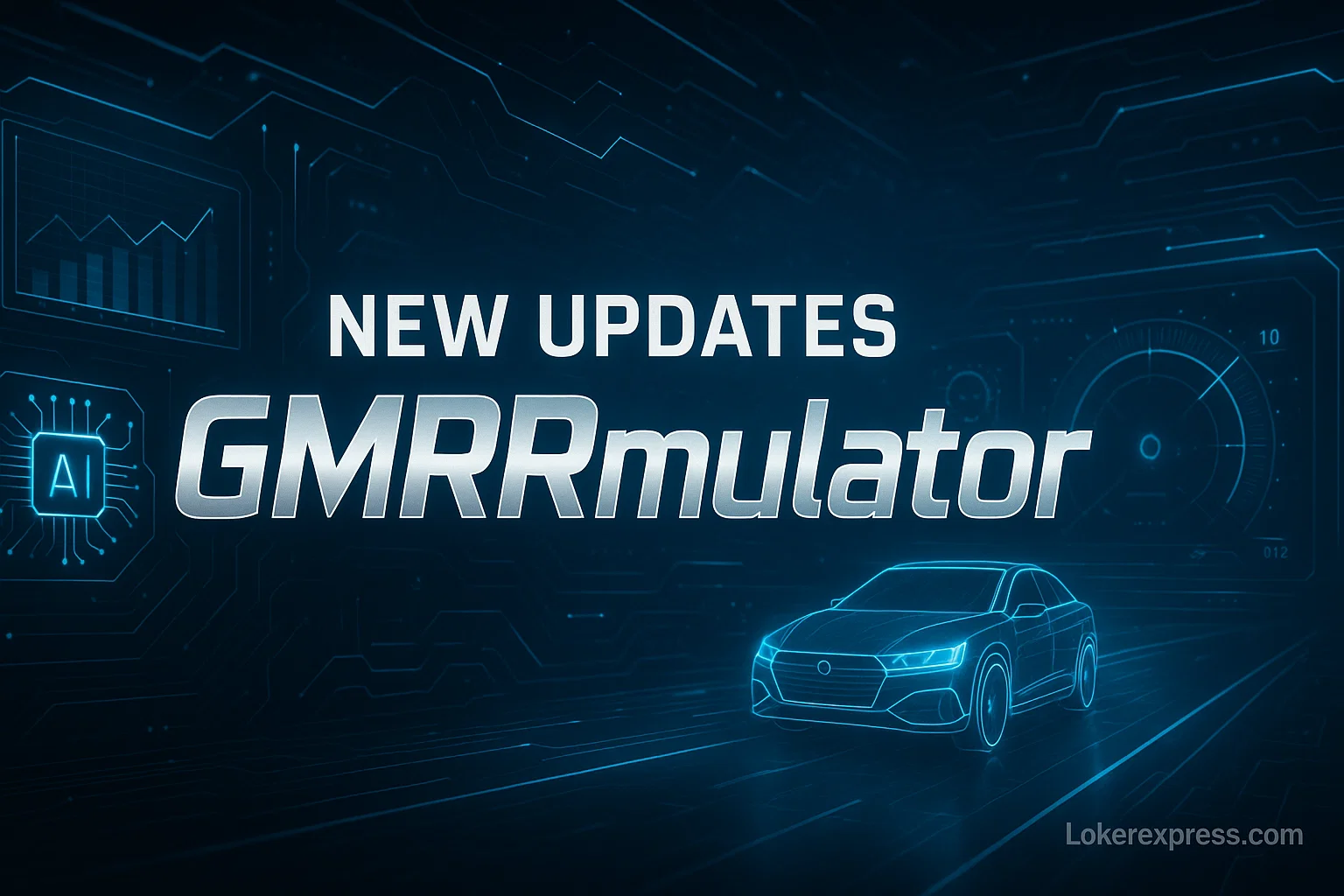In the ever-evolving world of game development and simulation technology, GMRRmulator has been one of the most talked-about tools for its adaptability, innovation, and performance-driven features. The 2025 updates have taken this already impressive platform to an entirely new level, integrating advanced analytics, AI-powered insights, and collaborative features that make it indispensable for developers and gaming enthusiasts alike. Whether you’re a casual user exploring simulation environments or a professional aiming to fine-tune game mechanics, the latest release of GMRRmulator offers groundbreaking tools that streamline workflows and boost performance.
This article provides a complete breakdown of all the new updates, their benefits, and what they mean for the future of this remarkable platform.
What Is GMRRmulator? A Quick Overview
For those who are new to the platform, GMRRmulator is a versatile simulation and testing tool designed primarily for game developers, performance engineers, and simulation hobbyists. It allows users to replicate real-world physics, environmental conditions, and game logic without the need to fully compile or deploy a game.
Originally launched as a niche utility, GMRRmulator quickly gained traction because of its flexibility and support for various gaming engines and middleware. Over the years, it has become a preferred choice for projects requiring in-depth testing across multiple devices and operating systems. The 2025 update cements its position by addressing user feedback, introducing modern tech integrations, and enhancing system stability.
A Completely Redesigned User Interface
One of the most noticeable changes in the new GMRRmulator update is the overhauled user interface. The old design, while functional, often felt cluttered, especially for those running multiple simulations at once. Now, the dashboard offers:
- Customizable layouts so you can arrange tools and metrics exactly how you like.
- Quick-access side panels for frequently used features.
- Dark mode and high-contrast themes to reduce eye strain during long sessions.
- Real-time preview windows that update as you adjust settings.
These changes aren’t just cosmetic — they have a direct impact on productivity. Users can now switch between simulation environments, analytics, and performance logs without unnecessary menu diving, which was a common complaint in earlier versions.
Real-Time Performance Tracking and Analytics
The analytics engine in the 2025 update has undergone a massive upgrade. Previously, users had to export simulation data to external tools for deeper analysis. Now, real-time tracking is built directly into the dashboard.
You can monitor:
- FPS (frames per second) and frame pacing.
- GPU and CPU utilization by percentage.
- Memory allocation patterns to detect leaks or inefficiencies.
- Latency tracking to measure responsiveness.
For professional developers, the ability to view frame-by-frame breakdowns in real time is invaluable. This makes debugging smoother and eliminates the guesswork in identifying what’s slowing down a build. The data can also be saved into session logs for future comparison, making long-term optimization easier than ever.
Expanded Simulation Capabilities
One of the most exciting parts of the update is the expanded simulation options. GMRRmulator can now mimic a broader range of in-game scenarios and environmental factors, including:
- Advanced physics simulations for more realistic collision and movement.
- Dynamic lighting adjustments for testing visual effects under different conditions.
- Weather and environmental variables that affect gameplay mechanics.
- AI behavior simulations to test NPC logic.
This is particularly beneficial for open-world game developers, who can now stress-test multiple systems simultaneously. Additionally, the introduction of genre-specific presets means you can load configurations tailored for racing games, RPGs, or platformers in seconds.
Improved Stability and Bug Fixes
Nothing frustrates users more than crashes during critical tests. The 2025 update addresses this by fixing long-standing bugs, including:
- Memory leaks during extended simulation sessions.
- UI elements that failed to update after configuration changes.
- Occasional frame-drop spikes when switching between environments.
This focus on core stability means GMRRmulator can now handle larger simulations without performance degradation. In stress tests, it maintained consistent performance even under workloads that previously caused instability.
AI-Powered Optimization Suggestions
One of the smartest additions in this release is the AI optimization assistant. This system monitors simulation metrics in real time and provides automated recommendations for improving performance.
For example:
- If your frame rate dips below a threshold, it will suggest lowering specific graphics settings instead of generic “reduce quality” prompts.
- It can detect inefficient code loops in game logic simulations.
- It can highlight overly complex lighting effects that slow rendering.
This feature drastically reduces trial-and-error testing, allowing both professionals and hobbyists to achieve optimal settings faster.
Collaborative Features and Team Workflows
The 2025 GMRRmulator is no longer just a single-user tool — it now supports multi-user collaboration. Teams can:
- Work on the same simulation project in real time.
- Leave inline comments and suggestions.
- Access a version history to roll back to previous settings.
- Share presets and environment setups in a community library.
This community-driven approach helps teams standardize testing methods and speeds up development cycles, especially for remote or distributed teams.
Wider Compatibility and Device Support
The new updates also make GMRRmulator compatible with a wider range of devices and controllers, including:
- Gamepads, steering wheels, and flight sticks.
- VR controllers for immersive simulation testing.
- Multi-screen setups with adjustable resolution scaling.
Additionally, import/export functionality now supports more game engine formats, making integration with Unity, Unreal Engine, and custom in-house engines more seamless.
User Feedback and Early Impressions
Early adopters of the 2025 update have praised the new UI, faster load times, and AI-powered optimization. One beta tester commented:
“I’ve cut my testing cycle in half. The AI assistant points out issues I would have taken hours to find.”
Another user noted that the new collaboration tools have made cross-team projects significantly smoother, with less back-and-forth needed to sync configurations.
The Road Ahead for GMRRmulator
The developers have already hinted at future plans for the platform, including:
- Cloud-based simulation sessions for running high-performance tests without local hardware limitations.
- Advanced VR environment testing for next-gen gaming projects.
- Open-source plugins that allow the community to add specialized features.
If the 2025 updates are any indication, GMRRmulator will continue to grow into one of the most powerful tools in the game testing and simulation space.
Final Thoughts
The new updates GMRRmulator bring a combination of performance improvements, user-friendly design, and collaborative features that make it stand out in 2025. Whether you’re optimizing a AAA title or experimenting with an indie project, these upgrades offer more control, better insights, and a smoother workflow than ever before.
With a clear focus on innovation and user feedback, GMRRmulator is not just keeping pace with the gaming industry — it’s setting a new standard for simulation tools.

